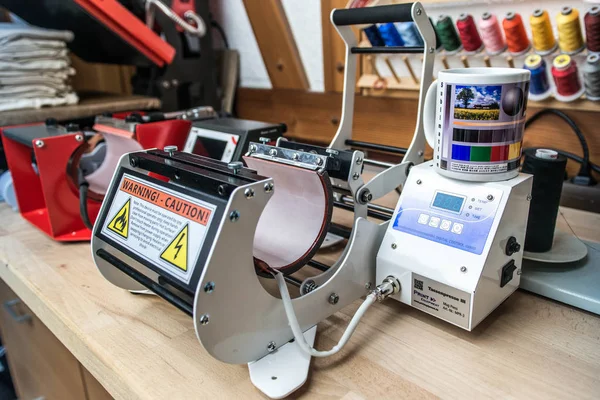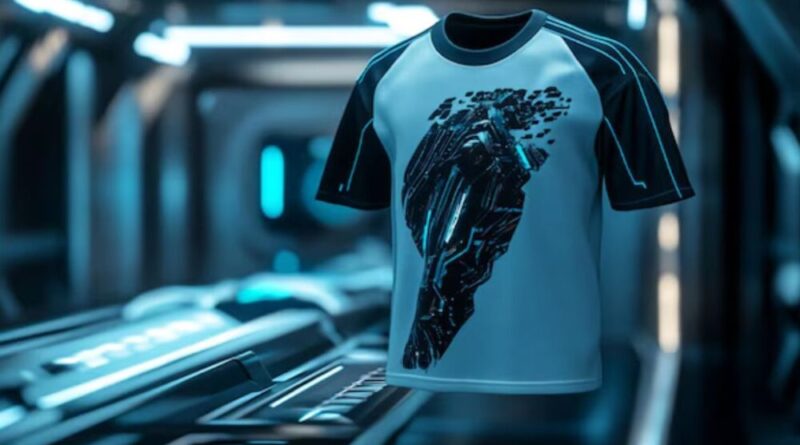Sublimation vs. Heat Transfer: Which is Better for Your Project?
When it comes to customising products like t-shirts, mugs, or home decor, two of the most popular methods are sublimation printing process and heat transfer printing. Both techniques allow you to add vibrant designs and personalised touches to a variety of materials, but they differ significantly in their processes, advantages, and suitability for certain projects. Understanding the pros and cons of each method will help you determine which is better for your specific needs.
In this blog, we’ll explore sublimation and heat transfer printing, breaking down the differences between the two methods and helping you choose the best option for your next creative project.
What is Sublimation Printing?
Sublimation printing is a process in which special inks are transferred onto a material using heat, causing the ink to turn into a gas and bond with the fibers of the fabric (or other materials like ceramics, metals, or plastics). The key to sublimation is that the ink doesn’t sit on top of the surface—it becomes part of the material itself.
Best for: Polyester fabrics, coated metals, ceramics, and other polymer-based surfaces.
What is Heat Transfer Printing?
Heat transfer printing, also known as HTV (Heat Transfer Vinyl) or iron-on transfers, involves applying heat to a design printed on a special transfer paper or vinyl. The design is then “transferred” onto the material using a heat press or iron. Unlike sublimation, the ink or vinyl sits on top of the material, rather than being absorbed into it.
Best for: Cotton fabrics, dark-colored fabrics, and other materials that cannot handle sublimation.
1. Material Compatibility
Sublimation
Sublimation is ideal for synthetic materials, especially polyester. This is because the process requires the fibers to be able to bond with the ink. When the ink turns into a gas under heat, it’s absorbed into the fabric, making the print part of the material itself.
- Best for: Polyester, polymer-coated items (such as mugs, phone cases, or metal).
- Not suitable for: Cotton or dark fabrics, as the ink won’t bond well with natural fibers.
Heat Transfer
Heat transfer printing is incredibly versatile, working well with both cotton and polyester fabrics. The vinyl or transfer paper can be applied to a range of textiles, including t-shirts, hoodies, bags, and even home decor items like pillowcases and blankets.
- Best for: Cotton, polyester, blended fabrics, and dark-colored materials.
- Not suitable for: Sublimation-only materials (such as certain hard surfaces like aluminum or ceramic without a coating).
Winner: Heat transfer is more versatile for a wider range of materials, especially cotton and dark-colored fabrics, while sublimation is best for polyester and specially coated surfaces.
2. Durability and Quality of Prints
Sublimation
One of the greatest strengths of sublimation printing is the durability and vibrancy of the print. Since the ink bonds with the fabric or material at a molecular level, the design won’t fade, peel, or crack over time. The colors are vibrant and vivid, and the print feels smooth to the touch because it’s part of the material, not sitting on top of it.
- Benefits: Long-lasting, vibrant colors, no peeling or cracking.
- Ideal for: Designs that require long-term durability, such as sports apparel, custom mugs, or high-quality apparel.
Heat Transfer
While heat transfer printing can produce vibrant designs, the longevity and durability of the print depend on the type of material used. Heat transfer vinyl (HTV) can last quite a long time on fabric but might show signs of wear after many washes (such as peeling or cracking). Transfer paper prints are generally more prone to fading or peeling over time compared to sublimation.
- Benefits: Fast turnaround and great for complex designs.
- Challenges: The print can crack, fade, or peel over time, especially with heavy washing or stretching.
Winner: Sublimation wins for long-term durability, especially for fabrics that will undergo frequent washing.

3. Color Range and Detail
Sublimation
Sublimation printing excels when it comes to color range and detail. The ink turns into a gas and bonds with the material, allowing for full-color designs with smooth gradients and fine details. The process can handle a broad spectrum of colors, from rich reds to cool blues, without any limitations in tone or hue.
- Benefits: Seamless, full-color designs with no limitations.
- Best for: Designs requiring gradients, vibrant colors, and fine details.
Heat Transfer
Heat transfer printing can also achieve vibrant colors, but it is limited by the materials used. Transfer paper has color limitations compared to sublimation, especially when it comes to dark fabrics. Designs printed on transfer paper may look great initially but might lose vibrancy after a few washes. Vinyl transfers are excellent for bold, block-color designs, but can sometimes lack the intricate detail that sublimation can achieve.
- Benefits: Great for block color, logos, and custom text.
- Challenges: Limited detail for highly intricate designs.
Winner: Sublimation offers more vibrant colors, better details, and seamless gradients, making it ideal for complex and full-color designs.
4. Setup and Ease of Use
Sublimation
While sublimation printing offers great results, it requires some upfront investment. You’ll need a sublimation printer, sublimation ink, and special sublimation paper. Additionally, the process requires heat presses, and you need to work with the right materials—polyester or coated surfaces. The process can be more complicated for beginners.
- Setup requirements: Sublimation printer, heat press, sublimation ink, specialised paper.
- Learning curve: Moderate to high for beginners, especially when selecting the right materials.
Heat Transfer
Heat transfer printing is typically more beginner-friendly than sublimation. All you need is transfer paper, a heat press, and a printer (most standard inkjet printers work fine). For HTV, you can use a vinyl cutter to create your designs, making it relatively simple to set up.
- Setup requirements: Heat press, transfer paper or vinyl, standard printer or vinyl cutter.
- Learning curve: Low to moderate; very approachable for hobbyists and small business owners.
Winner: Heat transfer is easier to get started with, especially for beginners or small businesses, as it requires less specialised equipment.
5. Cost-Effectiveness
Sublimation
Sublimation can be more expensive to get started with due to the need for specialised sublimation printers and sublimation inks. However, once you have the equipment, the cost per print is relatively low, making it great for large, high-quality projects.
- Initial investment: High (for printer, ink, and materials).
- Cost per item: Low for bulk printing.
Heat Transfer
Heat transfer printing tends to have a lower initial investment because it uses more commonly available equipment (a regular printer and transfer paper or vinyl cutter). While the cost per print might be slightly higher, it’s a more affordable option for smaller or one-off projects.
- Initial investment: Low (requires a regular printer and heat press).
- Cost per item: Medium to high, especially for small runs or detailed designs.
Winner: Heat transfer is more cost-effective for those just starting out, especially for small runs, while sublimation becomes more cost-effective for large-scale, high-quality production.
6. Best Use Cases
Sublimation
- Best for: Polyester fabrics, sportswear, custom apparel, photo printing, custom mugs, metal, and coated items.
- Projects: Custom t-shirts, mugs, phone cases, sports team uniforms, and promotional items.
Heat Transfer
- Best for: Cotton fabrics, dark-colored materials, and bulk orders of simple designs.
- Projects: Custom t-shirts, bags, pillows, and small home decor items.
Conclusion: Which is Better for Your Project?
Both sublimation and heat transfer printing have their strengths, and the best option depends on your specific needs:
- Choose sublimation if you’re looking for vibrant, long-lasting, full-color prints on polyester fabrics, mugs, or coated materials. It’s the best option for high-quality, detailed designs that require durability and seamless results.
- Choose heat transfer if you’re working with cotton fabrics, dark materials, or need a more affordable, beginner-friendly option. Heat transfer printing is ideal for bold designs, logos, and custom text on apparel and accessories.
Ultimately, the right choice for your project will depend on the material you’re working with, the design complexity, and your budget. Both methods have their place in the world of custom printing, so understanding their differences will help you make the best decision for your creative endeavors.

